Nagarjuna Sagar Dam
Nagarjuna Sagar Dam is a masonry dam across the Krishna river at Nagarjuna Sagar which straddles the border between Guntur district, Andhra Pradesh and Nalgonda district, Telangana. Constructed between 1955 and 1967, the dam created a water reservoir with gross storage capacity of 11.472 billion cubic metres (405.1×109 cu ft). The dam is 590 feet (180 m) tall from its deepest foundation and 0.99 miles (1.6 km) long with 26 flood gates which are 42 feet (13 m) wide and 45 feet (14 m) tall.[2]
| Nagarjuna Sagar Dam | |
|---|---|
Nagarjuna Sagar Dam | |
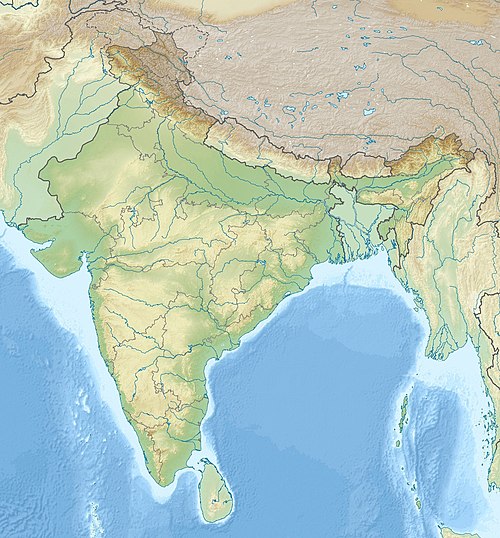 Location of Nagarjuna Sagar Dam in India | |
| Location | Guntur district, Andhra Pradesh and Nalgonda district, Telangana |
| Coordinates | 16°34′32″N 79°18′42″E |
| Purpose | Hydroelectric & Irrigation |
| Construction began | December 10, 1955 |
| Opening date | 1967 |
| Construction cost | 132.32 crore rupees |
| Dam and spillways | |
| Impounds | Krishna River |
| Height | 124 metres (407 ft) from river level |
| Length | 1,550 metres (5,085 ft) |
| Reservoir | |
| Creates | Nagarjuna Sagar Reservoir |
| Total capacity | 11.56 km3 (9×106 acre⋅ft) (405 Tmcft) |
| Active capacity | 5.44×109 m3 (4,410,280 acre⋅ft)[1] |
| Catchment area | 215,000 square kilometres (83,000 sq mi) |
| Surface area | 285 km2 (110 sq mi) |
| Power Station | |
| Operator(s) | Telangana State Power Generation Corporation Limited |
| Commission date | 1978–1985 |
| Turbines | 1 x 110 MW Francis turbine, 7 x 100.8 MW reversible Francis turbines |
| Installed capacity | 816 MW (1,094,000 hp) |
Nagarjuna Sagar was the earliest in a series of large infrastructure projects termed as "modern temples" initiated for achieving the Green Revolution in India. It is also one of the earliest multi-purpose irrigation and hydro-electric projects in India. The dam provides irrigation water to the Nalgonda, Suryapet, Krishna, Khammam, West Godavari, Guntur and Prakasam districts along with hydro electricity generation. Nagarjuna Sagar dam is designed and constructed to use all the water impounded in its reservoir of 312 TMC gross storage capacity which is the second biggest water reservoir in India.[1]
History
Construction
The Nizam made the British engineers begin the survey work for this dam across the Krishna river in the year 1903.[3] But the project construction was officially inaugurated by Prime Minister Jawaharlal Nehru on 10 December 1955 and proceeded for the next twelve years. Raja Vasireddy Ramagopala Krishna Maheswara Prasad, popularly known as late Muktyala Raja was instrumental in the construction of the Nagarjuna Sagar Dam via active political lobbying, a donation of one hundred million British pounds and fifty-five thousand acres of land. It was the tallest masonry dam in the world at that time, built entirely with local know-how under the able engineering leadership of Kanuri Lakshmana Rao the then Member of Parliament from Vijayawada.
The construction of the dam submerged an ancient Buddhist settlement, Nagarjunakonda, which was the capital of the Ikshvaku dynasty in the 1st and 2nd centuries, the successors of the Satavahanas in the Eastern Deccan. Excavations here had yielded 30 Buddhist monasteries, as well as artworks and inscriptions of great historical importance. In advance of the reservoir's flooding, monuments were dug up and relocated. Some were moved to Nagarjunakonda, now an island in the middle of the reservoir. Others were moved to the nearby mainland village of Anupu.[4]
The reservoir water was released into the left and right bank canals by Prime Minister Indira Gandhi on August 4, 1967.[5] Construction of the hydropower plant followed, with generation increasing between 1978 and 1985, as additional units came into service. In 2015, diamond jubilee celebrations of project's inauguration were held, alluding to the prosperity the dam has ushered into the region.[6]
Data
- Catchment Area : 214,185 km2 (82,697 sq mi)
- Full Reservoir Level (FRL): 179.83 metres (590 ft) msl
- Water spread area at FRL: 285 km2
- Gross storage capacity at FRL: 312 TMC[7]
- MDDL of river sluices: 137.3 metres (450 ft) msl
- Masonry dam
- Spillway of dam : 471 m
- Non-over flow dam : 979 m
- Length of Masonry dam : 1450 m
- Maximum height : 125 m
- Earth dam
- Total Length of Earth dam : 3414 m
- Maximum height : 128 m
- Power Generation
- Power Units : 1 No. conventional (110 MW capacity), 7 nos Reversible (100 MW capacity)
- Canal power house
- Right side : 3 units 30 MW (each)
- Left side : 2 units 30 MW (each)[8]
Utilisation
Irrigation
The right canal (Jawahar canal) is 203 km (126 mi) long with maximum 311.5 cumecs capacity and irrigates 1.117 million acres (4,520 km2) of land in Guntur and Prakasam districts. The left canal (Lalbahadur Shastri canal) is 179 km (111 mi) long with maximum 311.5 cumecs capacity and irrigates 1.008 million acres (4,080 km2) of land in Nalgonda, Suryapet, Krishna, West Godavari and Khamman districts.[8] The project transformed the economy of above districts. 54 villages (48 in Nalgonda and 6 in Guntur) were submersed in water and 24,000 people were affected. The relocation of the people was completed by 2007.
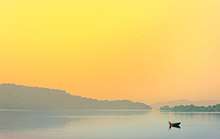
Alimineti Madhava Reddy lift irrigation canal draws water from the Nagarjuna Sagar reservoir to irrigate 0.37 million acres (1,500 km2) of land in Nalgonda district.[9] This lift scheme with pump house located near Puttamgandi village on the left bank of Krishna river also supplies nearly 20 TMC water for the drinking water needs of Hyderabad city.[10][11] Nearly 80% of the Nagarjuna Sagar water used in Hyderabad city is available for irrigation use in Nalgonda district in the form of regenerated water/treated sewage water. In addition, the high level flood flow canal drawing water from the left side shore of the reservoir also supplies irrigation water in Nalgonda district.
Power generation
The hydroelectric plant has a power generation capacity of 815.6 MW with 8 units (1x110 MW+7x100.8 MW). First unit was commissioned on 7 March 1978 and 8th unit on 24 December 1985. The right canal plant has a power generation capacity of 90 megawatts (120,000 hp) with 3 units of 30 megawatts (40,000 hp) each. The left canal plant has a power generation capacity of 60 megawatts (80,000 hp) with 2 units of 30 MW each.[12] The tail pond is under advanced stage of construction to put to use the pumped storage features of 7 x 100.8 MW units.
Many times, it happens that power generation from the 150 MW canal based units is not optimised when the Nagarjunasagar reservoir is overflowing on its spillway and very less water is required for irrigation from the canals during the monsoon floods. Power generation from canal based hydro units can be optimised by running these units during the flooding period by releasing the water fully into the canals. The unwanted canal water can be released into the natural stream when it is crossing the major stream. Thus run off power can be generated from the water going down unutilised into the river by the canal based power units also.
The water level in the Nagarjunasagar reservoir shall be maintained above the minimum level required for these units in most of the time by releasing water from the upstream Srisailam reservoir to optimise the power generation from the canal based units during dry season.
Tourism
Nagarjunasagar Dam is one of the popular weekend getaways from Hyderabad. Thousands of tourists visit Nagarjunasagar when the dam gates are open in monsoon season (around September / October). Hotel Vijay Vihar, operated by Telangana Tourism is one of the best places for accommodation in Nagarjunasagar.[13]
There are several other places around Nagarjunasagar that can be visited as a one-day trip from Hyderabad.
- Nagarjunakonda in Andhra Pradesh – Has to be reached by a boat from boating point operated by TSTDC or APTDC
- Anupu in Andhra Pradesh
- Ethipothala Falls near Macherla in Andhra Pradesh – The water released from the Nagarjuna Sagar right bank canal, the Chandravanka and Suryavanka streams keeps the water fall live or flowing during the rainy season.
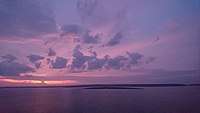
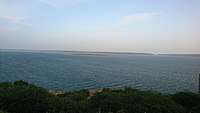
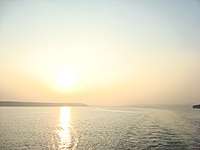
Environmental aspects
The artificial lift irrigation based diversion of the river from its natural delta area into Nalgonda district caused erosion of the Fluorine rich volcanic rocks in Nalgonda and contaminated its groundwater supply. It also caused uncertain flows of water into the Krishna river delta area and a shrinkage of the natural wonder "The Kolleru Lake".[14] The use of erosion resistant canals interfered with the natural silting process of a river to the deltas and created long-term ecological issues to the health of the delta lands. Reduced flows into the sea resulted in land salination and sea encroachment of coastal lands in Diviseema. The diversion of Krishna water for 200 km to Hyderabad resulted in massive evaporation losses especially in summer and reduced the size of Krishna river. The river water needs to be lifted 1600 ft above its natural flow for it to reach Hyderabad, power consumption that is unjustifiable given that there are cheaper ways to get water to Hyderabad. Nagarjuna Sagar , Srisailam, Almatti and Ujjani dams together successfully halted the flow of Krishna River before it reaches the delta and is good case study of how to kill a mighty river with poor environmental oversight – the fourth largest in the country. Hamsaladeevi the point where Krishna used to meet the ocean does not have Hamsalu (swan) and the Deevi (island) will merge into the ocean in the next decade. Desertification of various flood plains is already recorded. Many forest preserves along the natural Krishna flow are now categorized as "completely degraded" forest areas. Krishna river once home to an ecological wonderland of fresh water fish and aquatic population is now completely depopulated. The river stopped being navigable since the year of Nagarjuna sagar construction.
Impact on Hyderabad water security
Water planning for Hyderabad city started in 1920 with the tapping of Musi river for 15 Mgd. It progressed to tapping Esi (Himayat Sagar 1927 – 11mgd) and Manjira (1965–1993 – Majira and Singur dams) for another additional 130 Mgd. It took a huge leap during 1995–2004 with the commissioning of Krishna river water project (Phases I – III) at a total cost of over ten thousand crores to supply an additional 190Mgd to Hyderabad from Nagarjuna sagar away from the Krishna Delta and the Kolleru lake.[15] The project incurs an additional evaporation and leakage loss of 64 Mgd. About 30% of the water naturally flowing to Krishna Delta before 1995 is now diverted to Hyderabad.
Future potential
Tapping dead storage potential
The left and right bank canals sill level is fixed at 490 feet (149 m) MSL to supply irrigation water to two million acres. The unutilized storage capacity is nearly 180 TMC below the canals sill/bed level.[16] Nagarjuna Sagar reservoir also meets the Krishna delta water requirements to the extent of 80 TMC by letting water down stream into the river. Nearly 1.3 million acres (5,300 km2) is irrigated under Krishna Delta Canals. There is a possibility to utilize most of this idle dead storage capacity to store the river flood water further and to use as carry over storage. Nearly 150 TMC idle storage up to 380 feet (116 m) MSL, can be used leaving 30 TMC for silt settlement. This is possible by installing Water Powered Pump[17] (WPP) units at the base of the dam.
It is technically feasible to generate power by the existing hydro turbines from lower head (75 to 50 meters) at lower frequency and the lower frequency power can be upgraded / converted to normal grid frequency (50 Hz) by installing HVDC converters before feeding power into the grid.[18] The unused converter stations of HVDC Sileru–Barsoor transmission link can be relocated and utilised for this purpose. With minor modifications to the electrical systems of hydro power units, nearly 100 TMC water available in the dead storage of the reservoir can be put to use every year.
The reservoir dead storage water below the 125 m MSL can be released into the downstream river through the existing diversion tunnel which was in use to divert the river flow during the dam construction.[8]
Assured water supply to Hyderabad city
At present nearly one Tmcft per month or 250 million gallons per day or 350 cusecs is supplied to the Hyderabad city from Nagarjuna Sagar (NS) reservoir.[19] The water supply is nearly 50% of the total city water requirement. This water pumping scheme is part of Alimineti Madhava Reddy lift irrigation project with its foreshore pumping station at Puttamgandi which has nearly 2400 cusecs pumping capacity.[20] The water supply to the Hyderabad city is nearly 15% of its total capacity. The approach channel from the reservoir to the Puttamgandi pump house (PH) is located at 16°34′31″N 79°07′51″E where the Bhimanapalli Vagu tributary is joining the Krishna river.[21] The minimum draw down level (MDDL) of the PH is 502 feet (153 m) MSL below which water can not be pumped from NS reservoir.[22] The reliability / dependability of the PH for supplying assured water supply to Hyderabad city, is not adequate due to meagre inflows into the NS reservoir in some years and the need to deplete the NS reservoir water below 502 ft MSL for other purposes. In these circumstances, adequate water is to be stored above the 502 ft MSL to maintain 100% assured water source without depending totally on NS reservoir.[23]
This is possible by constructing a balancing reservoir by separating some area of the NS reservoir with a new dam across the Bhimanapalli Vagu tributary at 16°34′33″N 79°06′53″E just upstream of the Puttamgandi PH approach channel. This new dam with FRL 590 feet (180 m) MSL, would not submerge any additional area other than the area already submerged by the NS reservoir. The water inflows from the Bhimanapalli Vagu tributary joining the NS reservoir are first impounded by the new dam and if found excess over flows into the downstream NS reservoir. This new balancing reservoir's live capacity is nearly 6 Tmcft above the 502 ft MDDL which is equal to six months water supply to the Hyderabad city. This reservoir would have provision to receive water from the Puttamgandi PH when inflows from the Bhimanapalli Vagu tributary is not satisfactory and water is at adequate level in NS reservoir during monsoon months. When water level of NS reservoir goes below the 502 ft MSL, water is fed to the Puttamgandi PH approach channel from the new balancing reservoir for pumping water needs of Hyderabad city. The cost of this new dam project would be nearly 1.5 billion rupees only which will provide 100% assured water supply to the Hyderabad city without depending on the water availability from NS reservoir during the non monsoon months and drought years.[23]
Godavari water transfer via Nagarjuna Sagar left canal to Krishna river
The Nagarjuna Sagar left canal supplies nearly 130 TMC of water for irrigation needs in Telangana and Andhra Pradesh states. This is a contour gravity canal with gradual downward gradient (≃ 1:10,000) along the water flow direction. This canal can be used for transferring nearly 80 TMC Godavari river water into the Nagarjuna Sagar reservoir in addition to supplying the Godavari water under its entire command area. Thus a total of 210 TMC of Godavari water can be used in the Krishna basin of Telangana state from Srisailam and Jurala reservoirs for the new projects with 100% water dependability. Godavari water transferred into the Nagarjuna Sagar reservoir and Krishna main river can also be used for the proposed Palamuru lift irrigation and Nakkalagandi lift irrigation schemes in Telangana.
This is possible by re-engineering of the left canal to reverse its water flow direction from the location (near 17°22′13″N 80°21′43″E) where Godavari water would be pumped into this canal. The canal embankments would be raised to facilitate flow reversing towards Nagarjuna Sagar reservoir and intermediate pumping stations (with low head & high flow concrete volute pumps) would be installed near the Paleru balancing reservoir, Pedda Devulapalli balancing reservoir, left canal head regulator on the rim of Nagarjuna Sagar reservoir and the existing major aqueducts across Halia, Musi and Munneru tributaries. The cost of this canal redesigning and the associated pump houses would be one third of a new scheme to transfer Godavari river water into Nagarjuna Sagar reservoir at its FRL 590 feet (180 m) MSL with least possible total pumping head.[24] The above re-engineering of the canal is similar to modifications carried out to reverse the water flow of ancient Grand canal under Eastern Route project of South to North Water Transfer in China.[25]
See also
References
- "India: National Register of Large Dams 2009" (PDF). Central Water Commission. Archived from the original (PDF) on 21 July 2011. Retrieved 7 August 2011.
- "Nagarjunasagar". Archived from the original on 24 January 2007. Retrieved 25 January 2007.
- Subani, Hamad (28 June 2016). "The Secret History of Hyderabad State of the Nizam (South India; 1724–1948)". Cabal Times.
- "Nagarjunakonda". Retrieved 25 January 2007.
- "The Hindu : Magazine / Focus : Taming the Krishna". The Hindu. 18 December 2005.
- "Nagarjuna Sagar dam completed 60 years". Retrieved 11 December 2015.
- "Nagarjunasagar dam loses 25 per cent storage". 18 June 2018. Retrieved 28 June 2018.
- "Nagarjuna Sagar project". Retrieved 22 September 2015.
- "Aliminati Madhava Reddy Project (AMRP)". Retrieved 22 September 2015.
- Reddy, T. Karnakar (26 March 2016). "Expert suggests for full use of Puttamgandi pump house for Dindi project". The Hindu. Retrieved 22 April 2016.
- "Pumping station proposal in doldrums over funding delay". Retrieved 22 September 2015.
- Andhra Pradesh Hydel Power plants
- "NAGARJUNA SAGAR – TRAVEL GUIDE". Trawell.in.
- . The Hindu. The Hindu http://www.thehindu.com/news/national/andhra-pradesh/worries-grow-as-kolleru-shrinks/article8235423.ece. Missing or empty
|title=(help) - Provisioning of Drinking water to Hyderabad. JNU University Press. p. 155.
- "Technical data of Nagarjunasagar dam" (PDF). Retrieved 22 September 2015.
- "Nagarjuna Sagar WPP Units | Hydroelectricity (2.0K views)". Scribd.
- "Converting to full – power". Retrieved 22 December 2016.
- "Water to be Pumped From Dead Storage Level". Retrieved 22 April 2016.
- Bureau, Our Regional (16 March 2003). "Alimineti Project Fourth Pump Commissioned)". Business Standard India. Retrieved 22 September 2015.
- "Krishna Middle Sub-Basin map" (PDF). Retrieved 22 April 2016.
- "AP, Telangana staring at severe water crisis". Retrieved 29 April 2016.
- Rao, G. Venkataramana (25 April 2016). "Water level in Prakasam Barrage head pond dips to half". The Hindu. Retrieved 29 April 2016.
- "Jyothi Rao Pule Dummugudem Nagarjunasagar Sujala Sravanthi Project". Retrieved 19 July 2015.
- "Eastern Route project of South to North Water Transfer in China". Retrieved 19 July 2015.
External links
![]()
- Nagarjuna Sagar – Community Website & Photo Gallery
- Article on the dam in The Hindu
- Tale of Nagarjuna Sagar
- Nagarjuna Sagar documentary film

